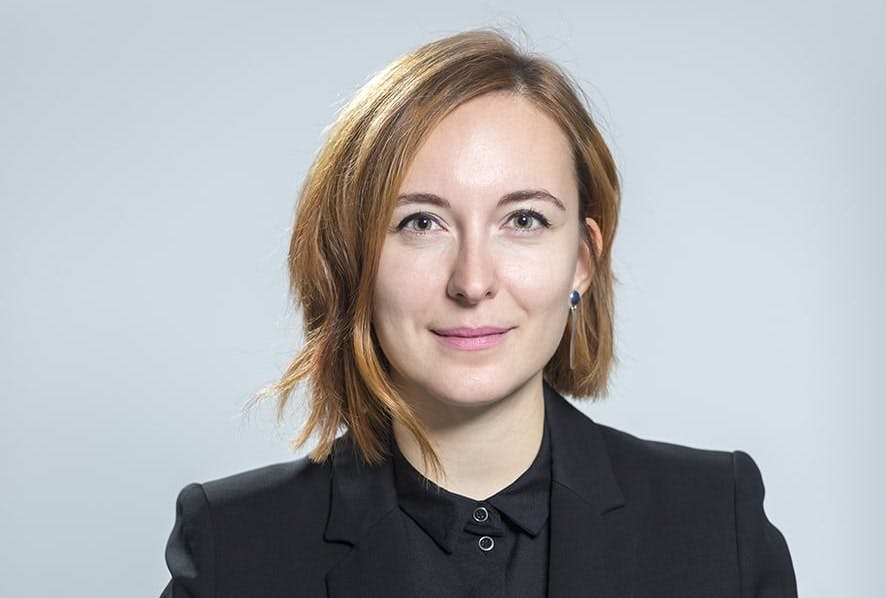Krisztina Orosz is Chief Experience Officer at Anyline, a mobile OCR SDK.
We caught up with Orosz to find out how Anyline is adapting during the pandemic, how it is helping frontline workers, and what three words of advice Orosz would offer marketers right now.
Let’s hear more…
Please describe your job: What do you do?
I am the Chief Experience Officer at Anyline. My main job is to take care of my team and make sure that they are happy and productive. Next to this I take care that our touchpoints during the customer journey are all at the highest quality according to Anyline standards.
How has your typical day been impacted in the short term by the pandemic?
Since the pandemic, we are working reduced hours under the Austrian government support programme for businesses. That means being a lot more efficient and focused with our time, and as part of the management team, keeping everyone connected and ‘in the loop’ is my biggest priority now.

What are your favourite tools and techniques to help you get your work done at the moment?
I think a lot of people feel like they’re stuck in limbo, with every day blending into the next. What’s helped me break out of this is setting myself little rewards: an online yoga class, a crazy new recipe, a team pub quiz, anything! Having something to look forward to at the end of each day is a good motivator, and it’s a fun way to try new things and stave off the boredom! These after-work events help also maintain a more personal connection to my colleagues, which makes communication for work much more efficient.
What changes are you making to help your brand connect with how people are feeling and experiencing the pandemic?
Right now, we all have a responsibility to play a part if we can to help, whether directly, by offering solutions to frontline services, or indirectly, perhaps by helping people get through the crisis on a personal level. As we already work with security and humanitarian services, we’ve decided to offer our scanning technology for free to those on the front line, from the police to logistics companies, while coronavirus is still disrupting our lives.
Which companies have impressed you since the outbreak?
It’s been really impressive to see some companies quickly pivoting to produce essential products, like Brewdog making hand sanitiser and others like Dyson developing ventilators. But equally, it’s ok to ‘stay in your lane’, and I respect companies for this approach too. Many companies who can’t develop actual products have stepped up and forgot about competition, and have started sharing best practices and guides. For example Loop, a media agency, has a wonderful marketing guide for everyone.
What trends have you seen in the last few weeks in your sector?
There’s no denying the virus has put many tech companies (startups, scaleups, you name it) in a vulnerable position. We are hearing of some – especially in tourism – that have seen revenue completely vanish overnight, and that’s definitely distressing. We are fortunate to have recently closed a round of funding, which puts us in a more stable situation than others.
One of the biggest trends we’ve seen is the proliferation of webinars everywhere – since everyone’s event calendar has been cancelled, it makes perfect sense to drive lead generation, and I’ve seen some great ones already.
In addition many older companies who have been through the 2008 crisis are sharing guides and giving advice to younger ones, to help them through the upcoming crisis. It’s great to see that people can come together in business during such a time.
What advice would you give a marketer right now?
If I could give just three words of advice, they would be honesty, authenticity and brevity.
Honesty, because unless you’re an epidemiologist, you’re not an expert. Authenticity, because people will see straight through a marketing exercise disguised as an important update. And brevity, because we are all flooded with content right now!
More generally, it’s clear that customer purchase triggers have changed, and when people want to address primary needs, a back-to-basics approach is best. Show the added value you can bring to the new reality we live in, and speak to the needs of prospective customers, without gimmicks.
What does long term planning and strategy look like now at your brand?
When you’re developing a new technology like we are, it can take time to convince new markets that your solution is not just a ‘nice to have’ but will actually be a vital part of their future digital transformation.
As we’re confronting an economic downturn, budgets are already being tightened, and businesses are rightly stripping off any unnecessary ‘bells and whistles’ they don’t need. So while we continue to develop technology that should ‘wow’ potential customers, our focus going forward is on showing the long-term savings and efficiencies companies will make by working with us.




